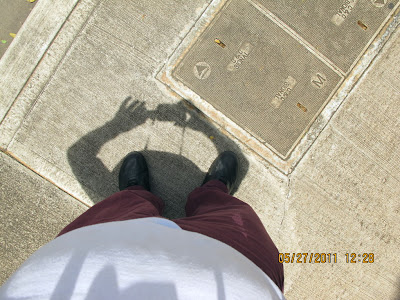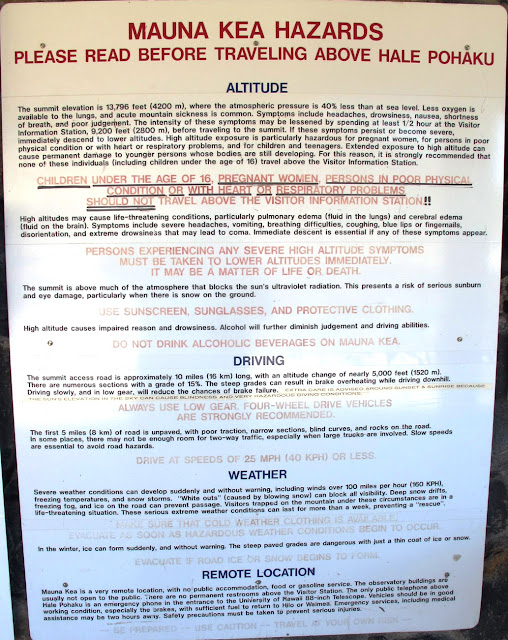Hula Festival – First Night- the traditional "Kohiko" Hulas
The first night that we attended the 48th Annual Merrie Monarch Festival was Friday night. We returned from our long drive to Kona quickly spruced up and headed to the Hilo Municipal Arena (a set of covered tennis courts) where the Festival was set up.
The Festival is a big deal for Hilo because of the number of visitors with the increased revenue they bring to the businesses in the city. The majority of the visitors for the Festival are Hawaii residents because the event is extremely popular here.
Note: In Hawaii, we do not call our visitors “tourists” as that sounds tacky and unwelcoming – we prefer calling people who come to the Islands as “Visitors.”
Visitors are very, very important to all of Hawaii.
 |
| Inside the arena before the competition starts |
Once inside the arena area, we purchased dinner. For me it was a couple of hot dogs and a diet soda. Then we made our way to our front row seats. Our eyes were level with the surface of the raised dance floor. In front of us was a guide track for a trolley with a TV camera to be moved back and forth to follow the action of the dance groups.

In front of our seats - At the right the TV sound man and then the TV Camera and dolly
Channel 5, KITV gave major coverage to the event with 4 or 5 hours of coverage on each of the five nights. The first 3 nights were preliminary events for other competitions. The final two nights are for the serious competitors. The Festival is the most strict and prestigious competition in the Hula universe.
The Royal Court is introduced to the audience first by a group of conch shell bearers sounding to each of the four cardinal points of the compass before the Royal entourage enters. I am sure that you remember that Hawaii is the only state in the United States which was a Kingdom before the Hawaiian Royals were forced to abdicate by landless Hawaiians, immigrant American merchants and missionaries about the time of the American Civil War.
 |
| Announcing the Royal Court's Entry with Conch Shell Trumpeting |
 |
| The Royal Herald Proclaiming the Royal Court |
The herald is followed by a page boy, then by feathered standard bearers and then the Royal Court itself. King David Kalakaua, his Queen and the Royal Family parade across the dance floor to their special seating.
 |
| Page boy and the Royal Court's Standard Bearer |
 |
| The Royal Court Enters - the Merrie Monarch, King David Kalakaua, and the Royal Family |
 |
| The Merrie Monarch and His Queen |
King David Kalakaua is honored by the festival as he wrote that “Hula is the language of the heart and is therefore the heartbeat of the Hawaiian People.”
In all there were 28 groups dancing both of the two nights. Friday was for the groups or “halau” (pronounced like the word “Allow" with a “Hah” sound at the start) to demonstrate their proficiency with the traditional dances – the “Kahiko” (Kahh-HEE-koh).
The costumes were more traditional in materials and styles for the Kahiko style of dances. The songs or chants that the dance is performed to are called “mele” pronounced like the English word “melee” (a type of fight in English) “May-LAY”. The mele are the oral stories, traditions, genealogies and histories of the Hawaiian people.
I will describe the various parts of the dancer’s costumes and the special implements they carry as you browse through the photos. The costumes and implements used by the dancers are usually made by the members of the halau themselves.
The local newspaper did an article about the implements and an illustration of the names of the costume parts at the webpage below.
 |
| 1st Overall & !st in Wahine Kahiko -Halau Ke'alaokamaile - Directed by Keali'i Reichehel of Maui |
The wrist and ankle lei are called "Kupe'e" (Koo-pay-EH). The neck garlands are made by the dancers the day before - sometimes with materials they gather themselves. They are called "lei'ai" (Lay-AYE) or neck leis.
The head lei is called Lei po'o (Lay POH-oh) it should be worn level to the floor. The materials for the lei po'o are palapalai fern that are often woven with blooms for color.
One discovery I made while at the Festival and in seeing other Hula being performed is that participation is non-discriminatory - particularly in the case of obese dancers, heavy people, people of color or Haole (Caucasian) and oriental peoples are often seen performing as part of the halau.
 | |
| Hula Halau O'Kamuela Directed by Kau'ionalani Kamana'o & Kunewa Mook: Kalihi & Waimanalo - from Oahu - Wahine Winners of 2nd place overall and Wahine Hula Kahiko |
The little drums the dancers carry are called - Puniu (poo-NI-hoo). The instrument is made from a coconut shell and may be fasted to the right thigh during a "noho" or sitting hula.
 |
| Wahine Halau above in the Noho - seated position - the crowd went wild when they did this move! |
 |
| Winner 3rd Place Wahine Hula Kahiko - Halau o ke 'A'ali'i Ku Makani - Director Manu'aikohana Boyd - Oahu |
The men or "kane" (CAHN-ay) danced very energetically. The mele they performed often had to do with voyaging, romance and paddling a canoe.
We left before the halau that won first place in the Kane kahiko performed to avoid the crush leaving the arena. I will put the performance of the halau who performed a dance dedicated to procreation in its place. This mele was first performed as a procreation chant in 1886 at the Iolani Palace for the 50th Birthday for King Kalakaua. It was choregraphed in 1986 for his 100th Birthday Jubilee at the Iolani Palace. Some of the moves are a bit saucy! The audience loved it!
 |
| A suggestive move during the performance of the procreation mele |
 | ||
| Add your own caption! |
 | ||||
| 2nd Place Kane Kahiko - Ka Leo O Laika I Ka Hikini O Ka Lii - Kaleo Trididad, Honolul, Oahu Performing with Ulili noisemakers |
The Ulili noisemaker makes a whirring sound and is rarely used in hula today as it requires a lot of skill to dance and to use the noisemaker while dancing. The instrument is composed of 3 gourds. The two on the end are filled with seed. The gourds must be in balance then attached to a rod after passing through the center gourd that is held by the dancer. The cord is wound around the rod and if used correctly will wind itself back on the rod after being pulled to spin the rod.
 |
| Halau Hula 'O kahikilaulani - Nahokuokalani Gaspang from Hilo, Hawaii 3rd Place Kane Winner |
Some other photos taken that night - some without captions.
 |
| Chanter for a mele |
Wahine with uliuli (oo-lee-OO-lee) rattles made of gourds with seeds and ornamented with feathers.
 |
| Wahine with mats for dancing in the Noho (seated) position using Ipu Heke (calabash gourds joined to use as a percusion instrument played by tapping on the ground and with the hand. |
 |
| Kane performing a mele about voyaging in an ocean crossing canoe |
I hope you enjoyed the photos as much as I did making them. Contact me if you use my photos. I retain all rights for commercial use. The photos were made using a Canon G11 digital camera in existing light using a mono-pod to add stability to the camera's image stabilization. Flash photography was not allowed at the arena.
TravelerAl@aol.com
Next - A parade in downtown Hilo on Saturday morning.





































